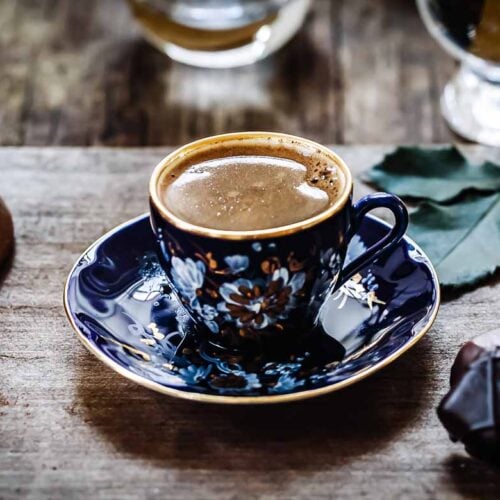Crafted Coffee for the Discerning Palate: Fresh, Bold, and Flavorful
Crafted Coffee for the Discerning Palate: Fresh, Bold, and Flavorful
Blog Article
Recognizing the Numerous Sorts Of Crafted Coffee Available: A Comprehensive Guide to Choosing the Right Brew for Your Palate and Preferences
Browsing the detailed globe of crafted coffee needs an understanding of its diverse components, from bean varieties to developing strategies. Each option affects the final cup, offering a spectrum of tastes that provide to private tastes. Whether you choose the subtle sweet taste of a light roast or the durable notes of a dark brew, the selection procedure can appear daunting. Yet, with a couple of crucial insights into the nuances of coffee characteristics, one can uncover a personalized experience that elevates the enjoyment of this precious drink. What variables will inevitably lead you to your best brew?
Introduction of Crafted Coffee
Crafted coffee represents a thorough technique to brewing that boosts the beverage from mere food to a sensory experience. This practice highlights top quality at every step of the coffee-making process, starting with the option of premium beans. Artisanal roasters focus on single-origin coffees and specialty qualities, which are frequently sourced from lasting farms that abide by ethical techniques.
Each aspect of crafted coffee, from roasting to developing, is performed with accuracy and objective. Roasters use various methods to improve the beans' inherent flavors, taking into consideration variables such as air movement, time, and temperature. Subsequently, the brewing procedure is customized to remove the best flavor profiles, utilizing methods that highlight the distinct attributes of each coffee kind.
In addition to concentrating on quality, crafted coffee cultivates an appreciation for the complexities of flavor and fragrance. Fanatics frequently involve in cupping sessions to recognize subtle notes and nuances, transforming coffee tasting into an art kind.
Popular Developing Methods
Exploring numerous brewing methods discloses the diverse techniques that can boost the pleasure of coffee. crafted coffee. Each method gives distinct flavors, scents, and textures to the last cup, satisfying various preferences and tastes
One of one of the most prominent approaches is the pour-over, which permits precise control over water temperature level and flow price, resulting in a tidy and tasty mixture. The French press, on the other hand, makes use of immersion brewing, removing rich oils and fragments for a fuller body.
Espresso is one more widely preferred approach, utilizing high stress to draw out focused coffee, making it the base for numerous specialized drinks like cappucinos and cappuccinos. Cold brew has obtained popularity for its smooth, much less acidic account, achieved by soaking coarsely ground coffee in cool water over an extended duration.
The AeroPress supplies adaptability and convenience of use, permitting coffee enthusiasts to explore mixture times and pressures. The Moka pot creates a solid, abundant coffee reminiscent of espresso, suitable for those that value a bolder flavor.
Coffee Bean Varieties

Arabica beans are recognized for their intricate and smooth flavors, usually featuring wonderful, fruity, and floral notes. They prosper at greater altitudes and are commonly grown in find out regions with cooler environments. This selection represents most of international coffee manufacturing and is favored for its nuanced taste.
On the other hand, Robusta beans are defined by their bold, natural flavors and greater high levels of caffeine material - crafted coffee. They are easier to grow, resistant to parasites, and frequently grown in reduced altitudes. Robusta is usually utilized in espresso blends to develop a rich crema and a more robust body
Additionally, there are a number of lesser-known varieties, such as Liberica and Excelsa, which add distinct tastes and fragrances to specialty coffees. Recognizing these bean selections is vital for picking the best mixture, as each type can dramatically modify the coffee experience based upon individual choices.
Flavor Profiles Explained
Flavor accounts in coffee are an intricate interplay of numerous components, including scent, body, aftertaste, and level of acidity. Each of these variables contributes to the total sensory experience, allowing consumers to recognize and value the subtleties of their mixture.
Scent plays an essential duty; it establishes the stage for the sampling experience, with notes ranging from flower and fruity to earthy and nutty. Level of acidity, often explained as illumination, can boost tastes and provide a refreshing high quality, while an absence of level of acidity might produce a these details smoother, extra smooth mug.
The body of coffee refers to its weight on the palate, which can range from light and tea-like to full and syrupy. This element influences exactly how the tastes are viewed, with a much heavier body usually magnifying the richness of the brew. Lastly, aftertaste, or surface, explains the remaining flavors that remain after swallowing. A clean finish might leave a pleasant residual sweetness, while a more complex aftertaste can disclose surprise notes that create with time.
Comprehending these flavor profile components permits coffee lovers to better value their selections and discover the varied world of crafted coffee.
Tips for Picking Your Brew
When selecting your brew, understanding your individual preferences right here and the qualities of different coffee types is crucial. Begin by recognizing your taste account; do you prefer fruity, nutty, or chocolatey notes? Checking out different beginnings can help you uncover unique flavors, as beans from regions like Ethiopia commonly show brilliant, floral notes, while those from Colombia could provide a smoother, well balanced preference.
Next, take into consideration the developing technique. Each technique, whether it be pour-over, French press, or espresso, influences the final taste and stamina of your coffee. A French press commonly produces a fuller-bodied brew, while pour-over methods can generate a cleaner, extra nuanced cup.

Finally, do not be reluctant to experiment. Sampling different blends and single-origin coffees can cause delightful explorations and a better understanding of your choices. Engaging with educated baristas and going to coffee samplings can even more boost your journey in choosing the perfect brew customized to your palate.
Final Thought
In conclusion, navigating the varied landscape of crafted coffee entails an understanding of different brewing techniques, bean selections, and taste profiles. By exploring the attributes of Arabica and Robusta, as well as acquainting oneself with various roasting techniques, individuals can enhance their coffee experience.
Consequently, the brewing procedure is customized to remove the ideal flavor profiles, utilizing approaches that highlight the special features of each coffee kind. crafted coffee.
In addition to concentrating on high quality, crafted coffee cultivates a gratitude for the complexities of flavor and scent.When picking your brew, understanding your individual choices and the attributes of different coffee kinds is essential. Each technique, whether it be pour-over, French press, or espresso, affects the last taste and stamina of your coffee.In final thought, navigating the diverse landscape of crafted coffee includes an understanding of different brewing methods, bean selections, and taste profiles.
Report this page